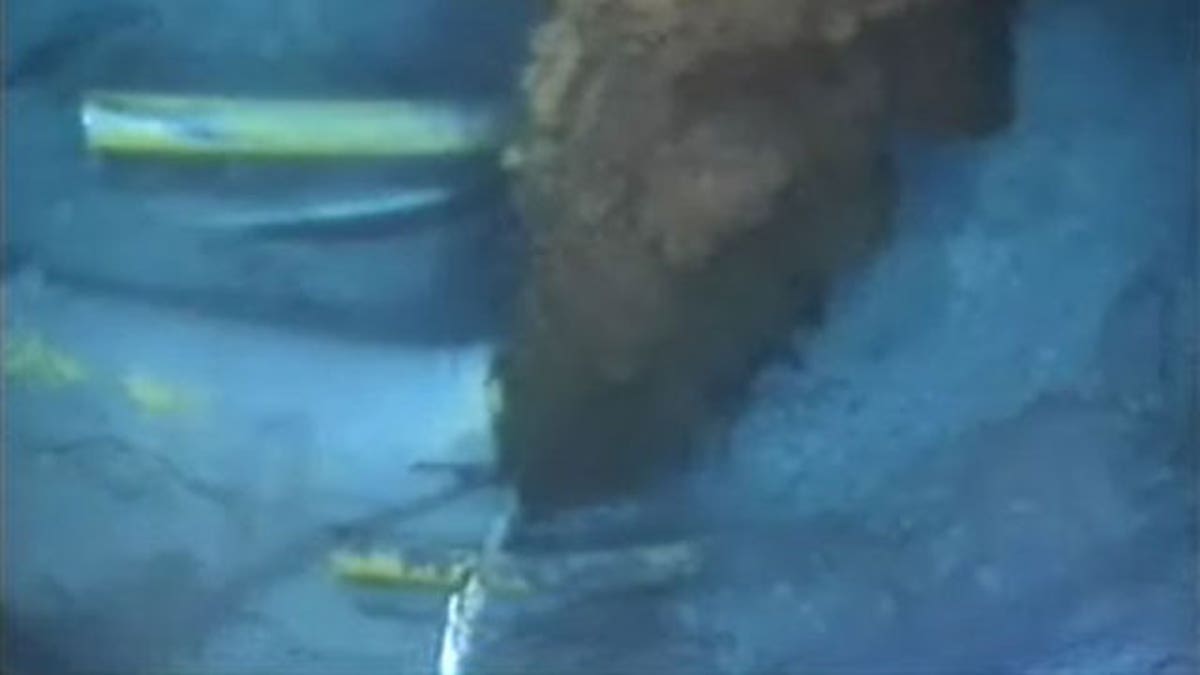
May 26: Live video feed shows the oil plume gushing in Gulf of Mexico as seen on the BP.com website. (AP)
It was a difficult drill from the start.
API Well No. 60-817-44169 threw up many challenges to its principal owner, BP PLC, swallowing expensive drilling fluid and burping out dangerous gas. Those woes put the Gulf of Mexico project over budget and behind schedule by April 20, the day the well erupted, destroying the Deepwater Horizon rig and killing 11 men.
Government investigators have yet to announce conclusions about what went wrong that day. The final step in the causation chain, industry engineers have said in interviews, was most likely the failure of a crucial seal at the top of the well or a cement plug at the bottom.
But neither scenario explains the whole story. A Wall Street Journal investigation provides the most complete account so far of the fateful decisions that preceded the blast. BP made choices over the course of the project that rendered this well more vulnerable to the blowout, which unleashed a spew of crude oil that engineers are struggling to stanch.
BP, for instance, cut short a procedure involving drilling fluid that is designed to detect gas in the well and remove it before it becomes a problem, according to documents belonging to BP and to the drilling rig's owner and operator, Transocean Ltd.
BP also skipped a quality test of the cement around the pipe—another buffer against gas—despite what BP now says were signs of problems with the cement job and despite a warning from cement contractor Halliburton Co.
Once gas was rising, the design and procedures BP had chosen for the well likely gave this perilous gas an easier path up and out, say well-control experts. There was little keeping the gas from rushing up to the surface after workers, pushing to finish the job, removed a critical safeguard, the heavy drilling fluid known as "mud." BP has admitted a possible "fundamental mistake" in concluding that it was safe to proceed with mud removal, according to a memo from two Congressmen released Tuesday night.
Finally, a BP manager overseeing final well tests apparently had scant experience in deep-water drilling. He told investigators he was on the rig to "learn about deep water," according to notes of an interview with him seen by the Journal.
Some of these decisions were approved by the U.S. Interior Department's Minerals Management Service, which has come under fire for what President Obama has called its "cozy relationship" with the oil industry. But in at least one case, the decision made apparently diverged from a plan MMS approved. MMS declined to comment.

